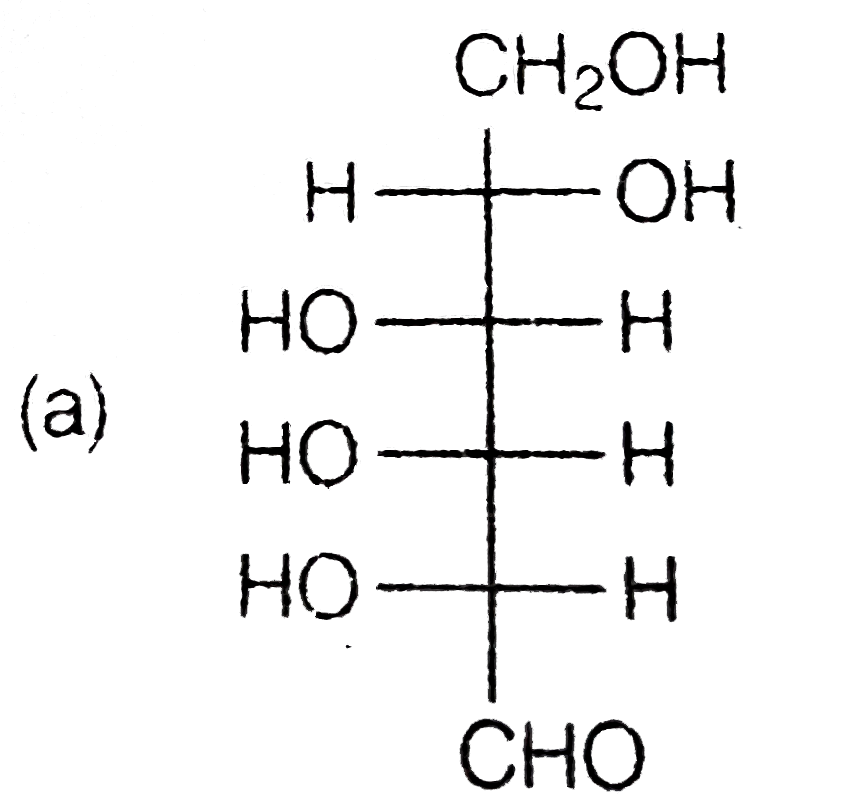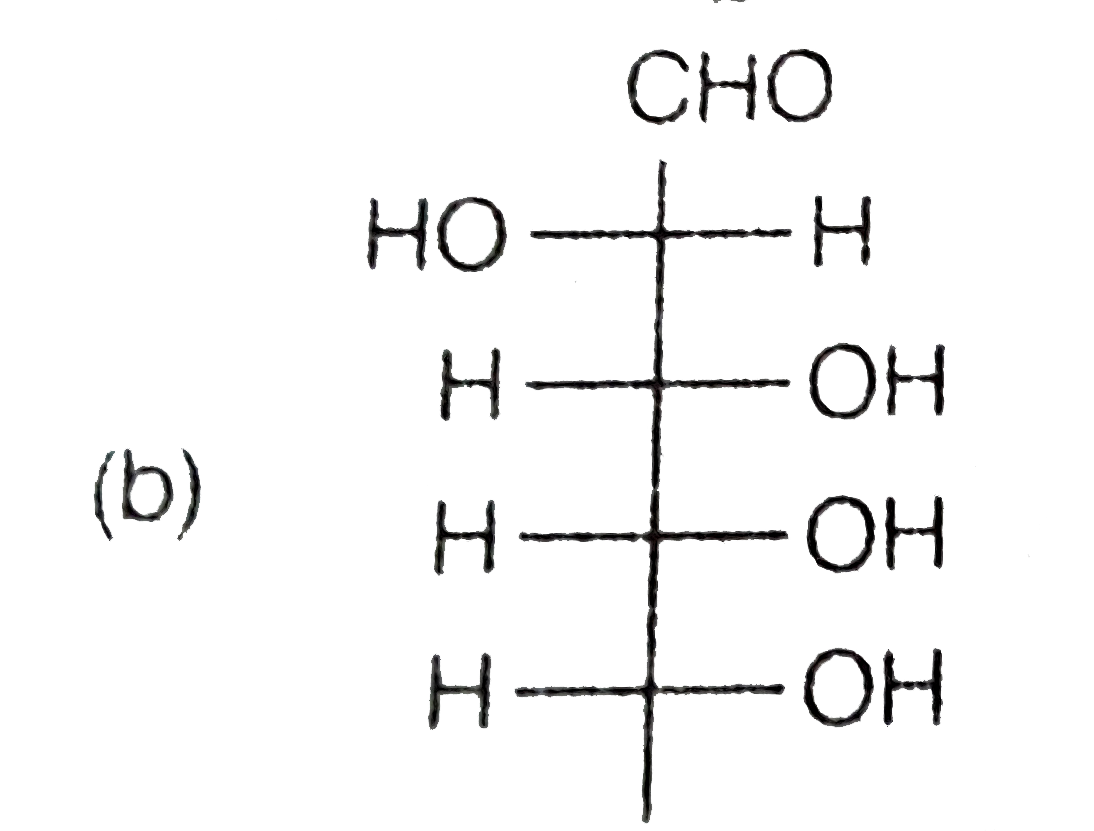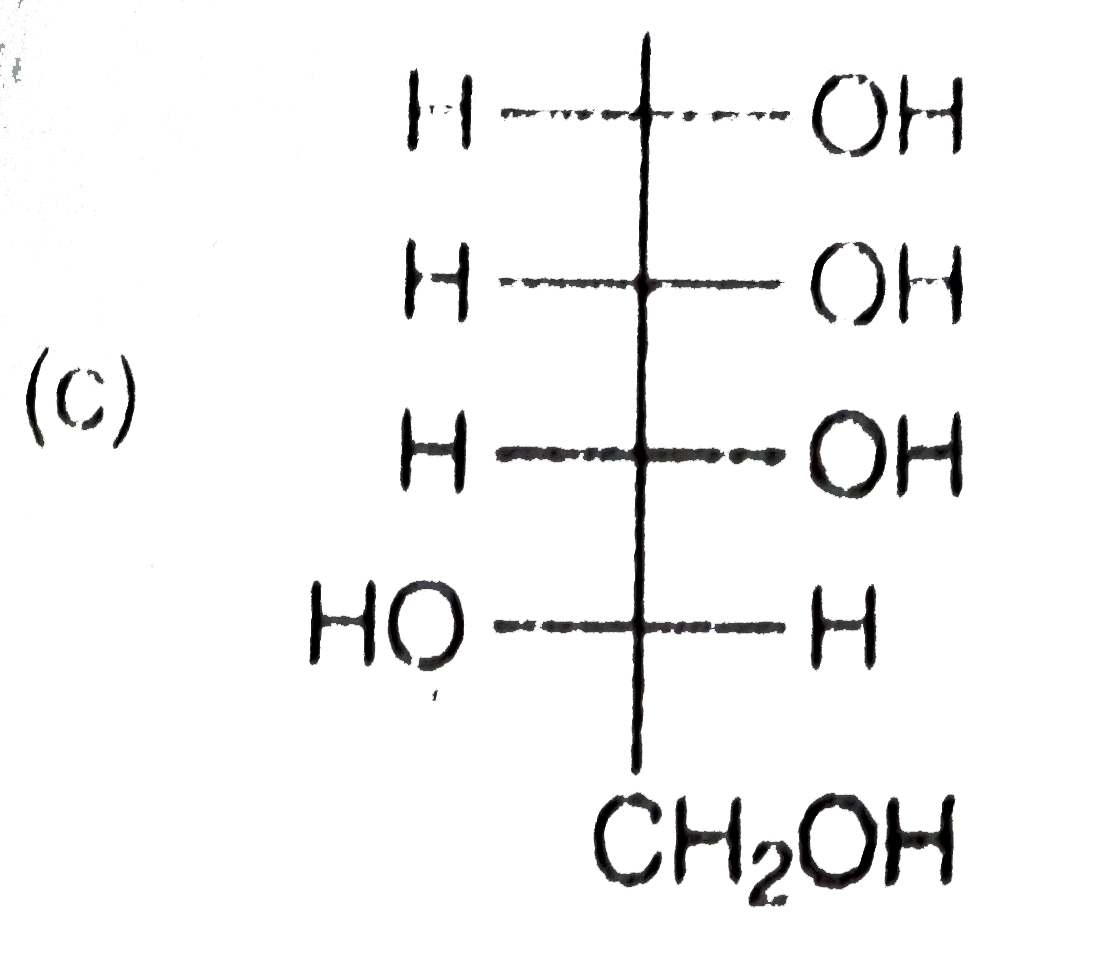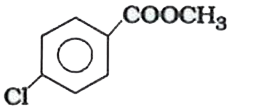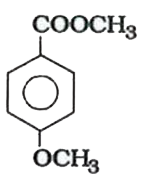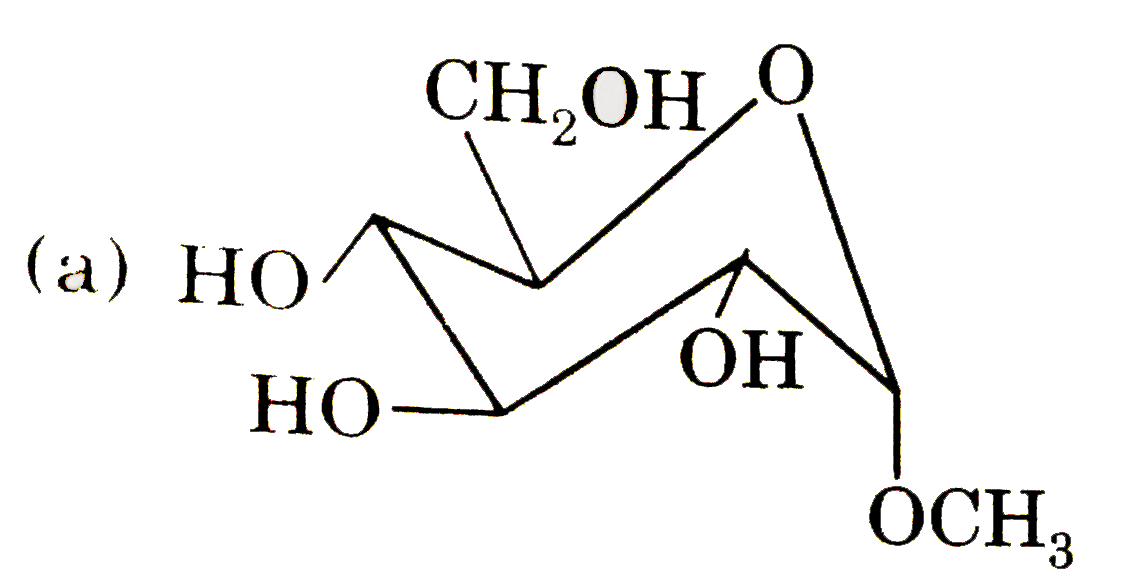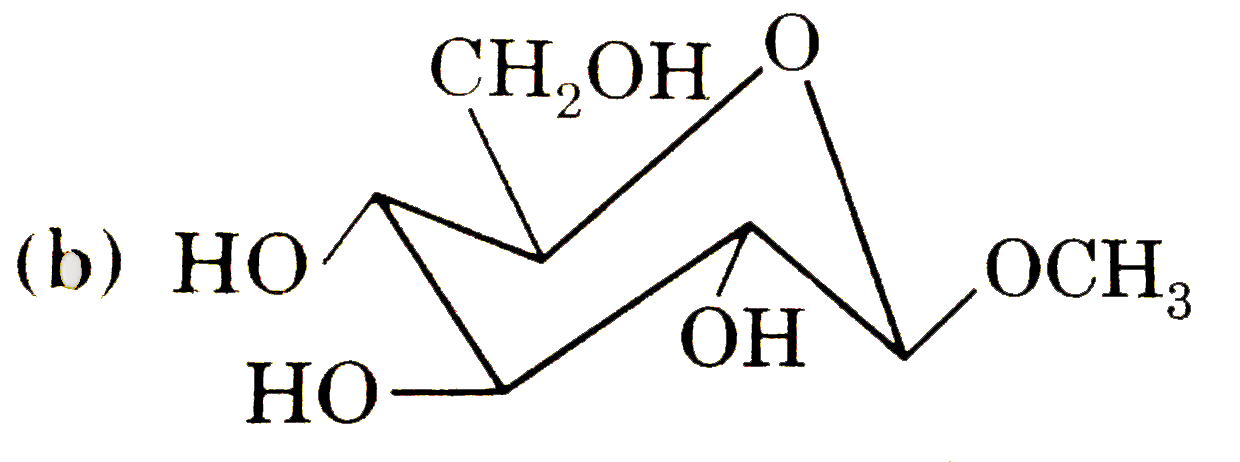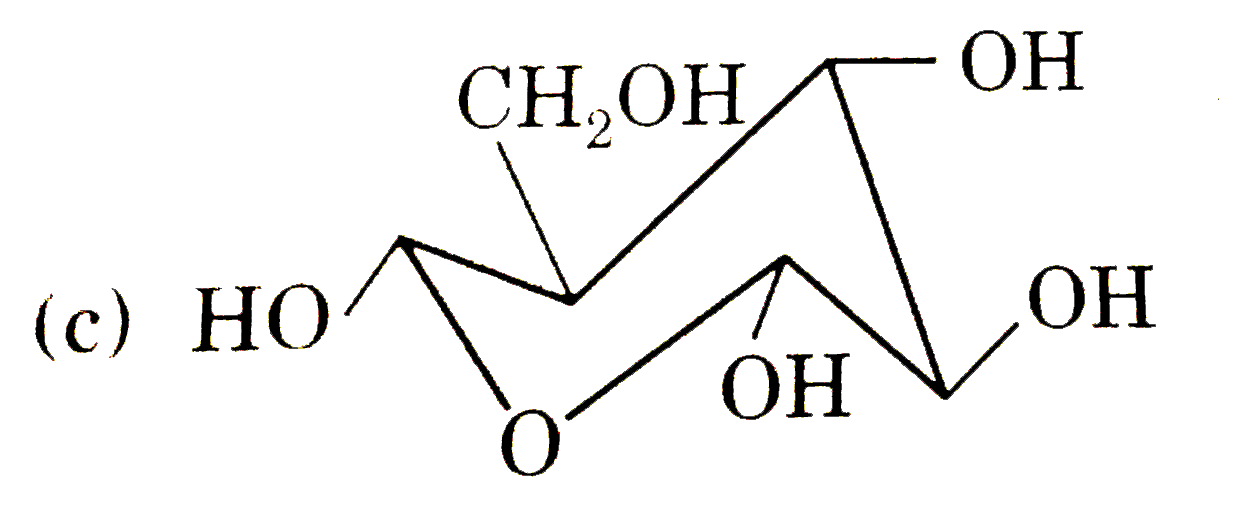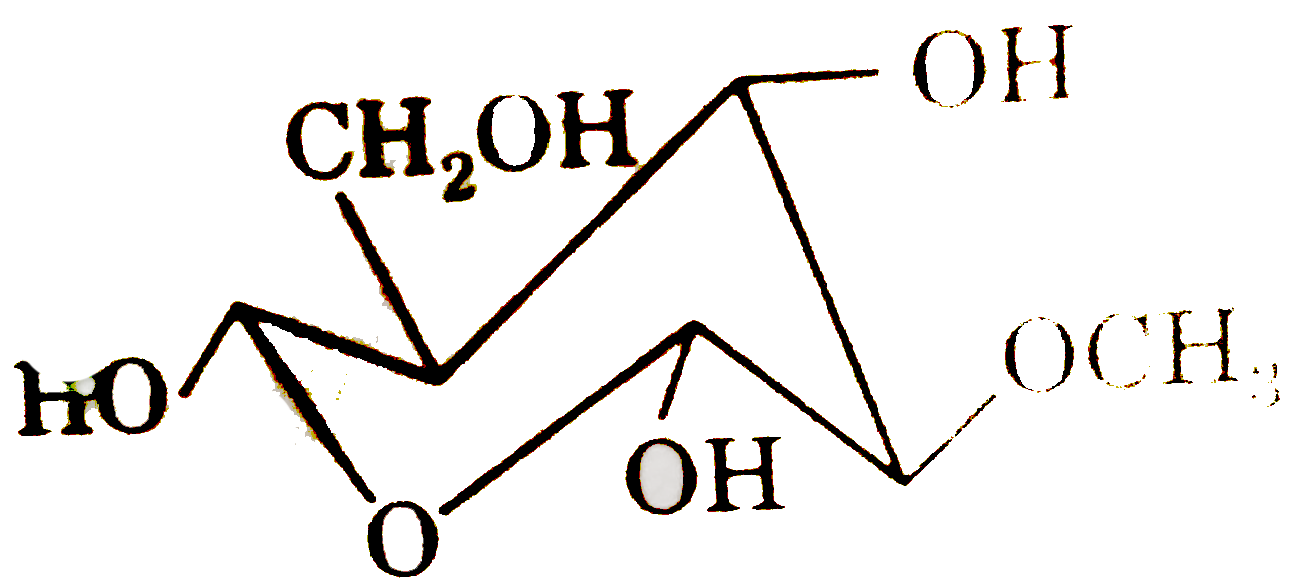Explore topic-wise InterviewSolutions in .
This section includes InterviewSolutions, each offering curated multiple-choice questions to sharpen your knowledge and support exam preparation. Choose a topic below to get started.
| 18201. |
Which change in [Mn(CN)_(6)]^(4-) results in symmetrical ditribution of electrons in non-degenerate d- orbitals of metal ion ? (P) [Mn(CN)_(6)]^(4-)underset(byO_(2))overset("oxidation")to [Mn(CN)_(6)]^(3-) (Q) [Mn(CN)_(6)]^(4-)underset(by Zn)overset("reduction")to [Mn(CN)_(6)]^(5-) |
|
Answer» <P>P only `[overset(+1)Mn(CN)_(6)]^(5-) implies d^(6), t_(2g)^(2, 1, 1)e_(g)^(1, 1)` [Due to low O.S. of `Mn(+1) Delta_(0) lt P`, hence, pairing does not occur.] |
|
| 18202. |
Which of the following would enable you to remove SO_(4)^(2-) ions from a mixture of C_2O_(4)^(2-), and Cl^(-) ions? |
| Answer» ANSWER :C | |
| 18203. |
Which Fischer structure represents the open chain form of the following two anomers ? |
|
Answer»
|
|
| 18205. |
What will be the parital pressure of He and O_(2) respectively , if 200 ml of He at 0.66 atm and 400ml at O_(2) at 0.52 atm pressure are mixed in 400 ml vessel at 20^(@)C. |
|
Answer» 0.33 and 0.56 `n_(He)=(0.66xx200)/(RT )` `n_(O_(2))=(0.52xx400)/(RT)` `PV=nRT` `P=((n_(He)+n_(O_(2)))RT)/(400)` `P_(T)=(0.66xx200+400xx0.52)/(400)` `:' X_(He)=(n_(He))/(n_(O_(2))+n_(He))` `X_(He)=(0.66 xx 200)/(0.66 xx200+400xx0.52)=(132)/(132+208)` `P_(He)=X_(He)P_(T)=(132)/(340)xx(340)/(400)implies P_(He)=0.33` `X_(O_(2))=(208)/(400)` So, `P_(O_(2))=0.52` |
|
| 18206. |
The term invert sugar refers to an equimolar mixture |
|
Answer» D-Glucose and D-galactose |
|
| 18207. |
Which one of the following compounds most readily undergoes substitution by S_(N)2 mechanism? |
|
Answer» `CH_(3)CH_(2)CL` |
|
| 18208. |
When Br_2 is treated with aqueous solutions of NaF, NaCl and NaI separately |
|
Answer» `F_(2),Cl_(2) ` and `I_(2)` are LIBERATED `2NaI + Br_(2) to 2Na Br +I_(2)` |
|
| 18209. |
Which of the following most readily undergoes hydrolysis ? |
|
Answer»
|
|
| 18210. |
The value of Delta G^@ for formation of Cr_2O_3 is -540 kJ mol^(-1) and that of Al_2O_3 is -827 kJ mol^(-1). Is the reduction of Cr_2O_3 possible with Al ? |
|
Answer» Solution :`4/3 Al_((s)) + O_(2(g)) to 2/3 Al_2O_(3(s)) , Delta_f G^(@) = -827 kJ "".....(i)` `4/3 Cr_((s)) + O_(2(g)) to 2/3 Cr_(2)O_(3(s)) , Delta_f G^@ = -540kJ "" ....(II)` Subtracting EQUATION (ii) from (i) we get, `4/3 Al_((s)) + 2/3 Cr_(2)O_(3(s)) to 2/3 Al_2O_(3(s)) + 4/3Cr_((s))` `Delta_f G^@ = -287 kJ mol^(-1) "" .....(iii)` SINCE net `Delta_fG^@` is negative, the reaction is thermodynamically feasible and therefore AL can reduce `Cr_2O_3`. |
|
| 18211. |
What is secondary cell ? Give examples of it. |
|
Answer» SOLUTION :* A SECONDARY cell after USE can be recharged by passing current through it in the opposite directio so that it can be used again. * (i) A GOOD secondary cell can undergo a large number of discharging and charging cycles. *(ii) The most important secondary cell is the LEAD storage cell and Ni-Cd cell. |
|
| 18212. |
What product is obtained when acetophenone is treated with hydrazine hydrate and KOH at 453-473K? |
|
Answer» SOLUTION :ketones are reduced to hydrocarbons. `UNDERSET("ACETOPHENONE")(C_(6)H_(5)COCH_(3)) underset(("Wolff-Kishner reduction"))overset(NH_(2)NH_(2).H_(2)O,KOH," ethylene glycol, 453-473K")to underset("Ethylbenzene")(C_(6)H_(5)CH_(2)CH_(3))` |
|
| 18213. |
Which of the following is man-made element? |
|
Answer» Ra |
|
| 18214. |
What is condensation polymer ? Give example. |
|
Answer» SOLUTION :condensation POLYMER : The polymer which is formed by the condensation polymer. E.g. NYLON 6,6 poly ethylene TEREPHTHALATE. |
|
| 18215. |
Which metal is extracted by a reduction process : |
|
Answer» Na |
|
| 18216. |
When equal weights of methyl alcohol and ethyl alcohol react with excess of sodium metal, the volume of H_(2) liberated is more in the case of |
|
Answer» `C_2H_5OH` |
|
| 18217. |
Which of the following is a highly deliquescent sold? |
|
Answer» `FeCl_(3)` |
|
| 18218. |
The two functional groups present in a typical carbohydrate are : |
|
Answer» `-CHO` and `-COOH` |
|
| 18219. |
Which of the following statementis not correct ? |
|
Answer» Lead(II) chloride is soluble in hot water and resppears on cooding `PbCI_(2) + "conc" HCIhArr[PbCI_(2)]^(2)` soluble complax |
|
| 18220. |
What is the role of Bithional in toilet soups ? |
| Answer» Solution :Bithionalacts as an ANTISEPTIC agent and REDUCES the ODOURS produced by bacterial DECOMPOSITION of organic matter on the skin. | |
| 18221. |
The reagent(s) for the following conversion : |
|
Answer» ALCOHOLIC KOH |
|
| 18222. |
Which of the following products is/are correctly matched in the following reactions. |
|
Answer» `HCHOoverset(NaOD)toHCOONa+CH_3OD` 
|
|
| 18223. |
When aniline is nitratedwith nitrating mixturein ice cold condition , the major product obtained is ___________. |
|
Answer» p-nitroaniline |
|
| 18225. |
Which is isomer ? |
|
Answer» ETHANOL and ethoxyethane |
|
| 18226. |
Which is more basic in character? |
|
Answer» RbOH |
|
| 18228. |
Value of standard electrode potential for the oxidation of Cl^(-) ions is more positive than that of water, even then in the electrolysis of aqueous sodium chloride, why is Cl^(-)oxidised at anode instead of water ? |
| Answer» Solution :Under the conditions of ELECTROLYSIS of aqueous sodium CHLORIDE, OXIDATION of water at ANODE requires over potential, HENCE `Cl^(-)` is oxidised instead of water. | |
| 18229. |
What happens when persistent dialysis of a colloidal solution is carried out ? |
| Answer» Solution :The stability of a colloidal sol is due to the PRESENCE of a SMALL AMOUNT of the electrolyte. On persistent dialysis, the electrolyte is completely removed. As a result, the colloidal sol BECOMES UNSTABLE and gets coagulated. | |
| 18230. |
Total number of beta-keto monocarboxylic acids (including stereoisomers) which on heating give |
Answer» 
|
|
| 18231. |
Write the chemical reactions of the following conversions : (i) CH_3 - CH_2 - Clto CH_3 - CH_2 - CH_2 - NH_2 (ii) C_6H_5 - CH_2 - Cl to C_6 H_5 - CH_2 - CH_2 - NH_2 |
|
Answer» Solution :(i) `CH_3 Cl + UNDERSET(("ALC"))(KCN) overset(Delta)to CH_3 CH_2 CN + KCl CH_3 CH_2 CN + 4(H) overset(Na//"ale")to CH_3 CH_2 -CH_2 - NH_2` `(II) C_6 H_5 - CH_2 - Cl + underset("(ale)")(KCN) to C_2 H_5 - CH_2 CN + KCl C_6 H_5 CH_2 CN + 4(H) overset(Na//"ale")to C_6H_5 CH_2 NH_2` |
|
| 18232. |
Using IUPAC norms write the formulas for the following: Hexaammineplatinum(IV) |
| Answer» SOLUTION :`[Pt(NH_(3))_(6)]^(4+)` | |
| 18233. |
Which of the following is positional isomer of alpha-D glucose ? |
|
Answer»
|
|
| 18234. |
Van't Hoff factor(i): |
|
Answer» Is Less than ONE in CASE of dissociation |
|
| 18235. |
Write the reaction between XeF_2 and KF ? |
| Answer» SOLUTION :`XeF_4 + 4 KI RARR XE + 4KF + 2I_2` | |
| 18236. |
Which of the following are soures of antibiotcs? |
|
Answer» Bacteria |
|
| 18237. |
When AgNO_(3) solution is added in execss to 1lit. CoCl_(3),XNH_(3) solution, one mode of AgCl is formed,. What is the or x? |
|
Answer» 1 |
|
| 18238. |
Which of the following alcohols does not give a red colour in Victor Meyer test- |
|
Answer» ISOBUTYL ALCOHOL |
|
| 18239. |
Which of the following has the largest de Broglie wavelength provided all have equal velocity? |
|
Answer» Carbon dioxide molecule Since among these `NH_(3)` has smallest MASS, it will have largest DE -BROGLIE WAVELENGTH. |
|
| 18240. |
Which of the following statements regarding sulphur dioxide is not true? |
|
Answer» `SO_(2)` is an ANGULAR molecule |
|
| 18241. |
Which of the following statements are correct about HCOOH |
|
Answer» It is a stronger ACID than `CH_(3)COOH` |
|
| 18242. |
Which of the following amines docs not react with Hinsbcrg's reagent? |
|
Answer» `CH_(3)CH_(2)NH_(2)` |
|
| 18243. |
Which halogen acid is a liquid: |
|
Answer» HF |
|
| 18244. |
Which one of the following formulae representsthe first order reaction ? |
|
Answer» `k=2.303/(t) log ([A])/([A]_0)` |
|
| 18245. |
Which is not member of vitamin B complex group : |
|
Answer» Retinol |
|
| 18246. |
The values of oxidation number of S in S_(8), S_(2) F_(2) and H_(2)S are respectively |
|
Answer» `-2, +1 and -2` |
|
| 18247. |
The tendencies of the electrodes made up of Cu,Zn and Ag to release electrons, when dipped in their respective salt solutions decreases in the order:ZngtAggtCu,CugtZngtAg,ZngtCugtAg,AggtCugtZn. |
|
Answer» `ZngtAggtCu` |
|
| 18248. |
What is thepH of the buffer solutioncontaining0.15 mol of NH_(4)OHand 0.25 mol of NH_(4)Cl ?K_(b)for NH_(4)OH is 1.98 xx10^(-5) |
|
Answer» 10 ` - log (1.98 xx10^(-5))+ log. ((0.25)/(0.15))` `pH = 9 ` |
|
| 18249. |
Which reaction occurs at cathode during electrolysis of fused lead bromide : |
|
Answer» `PB rarrPb^(2+) +2e` |
|
| 18250. |
What is the normality of 250 mL. H_(2)SO_(4) having pH = 0.0 ? |
|
Answer» SOLUTION :`PH = 0 "" LOG[H^(+)]=0 "" [H^(+)] =1` Molarity = 0.5M Normality = 1 N |
|
